Tokyo Corners: The Unique Style of Sculptor Asakura Fumio's Museum
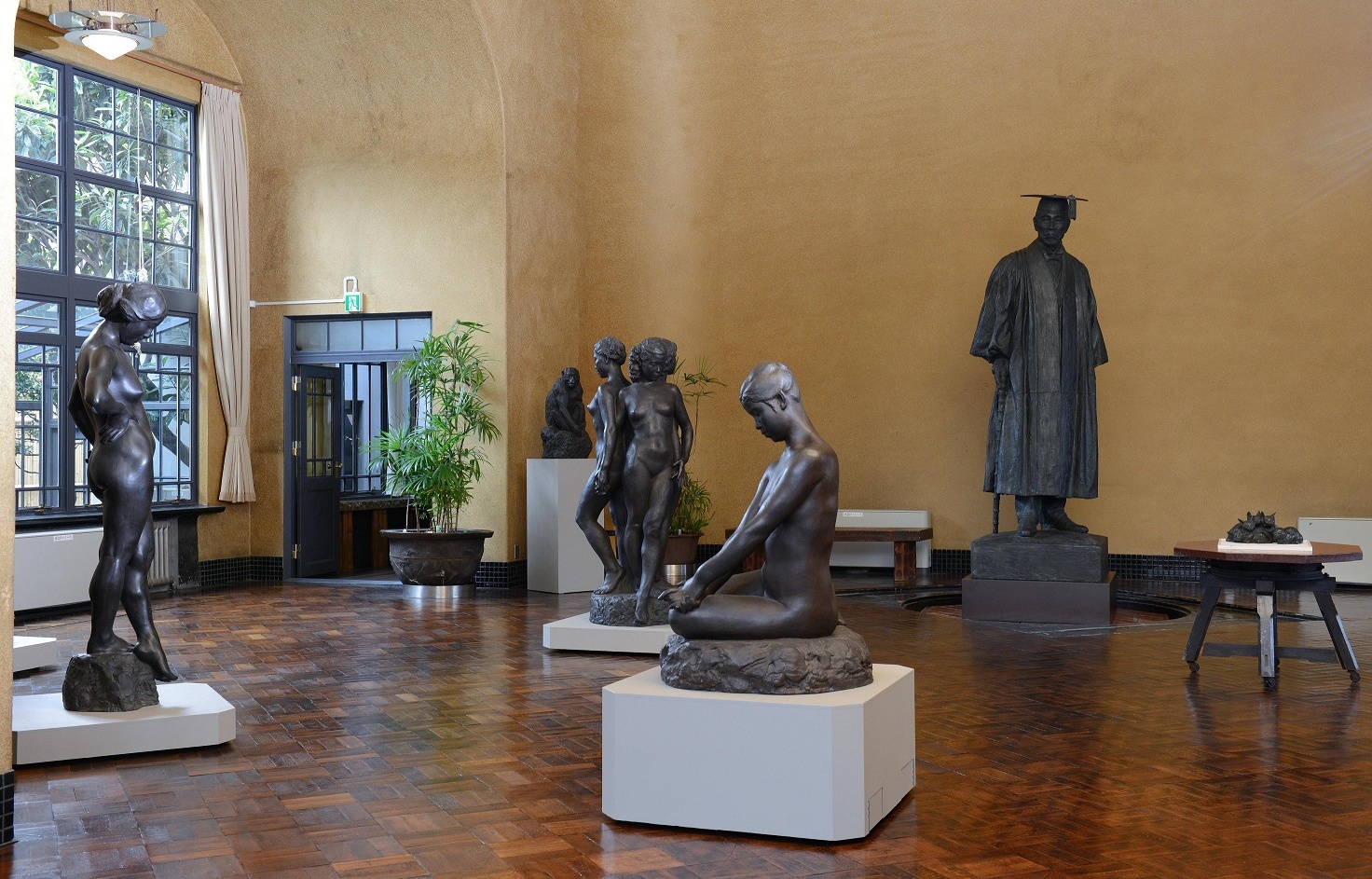
Photo: ©ASAKURA Museum of Sculpture.
A visit to sculptor Asakura Fumio's former studio and residence, now a museum, in historical Yanaka, offers a look at one man’s vision of art and life.
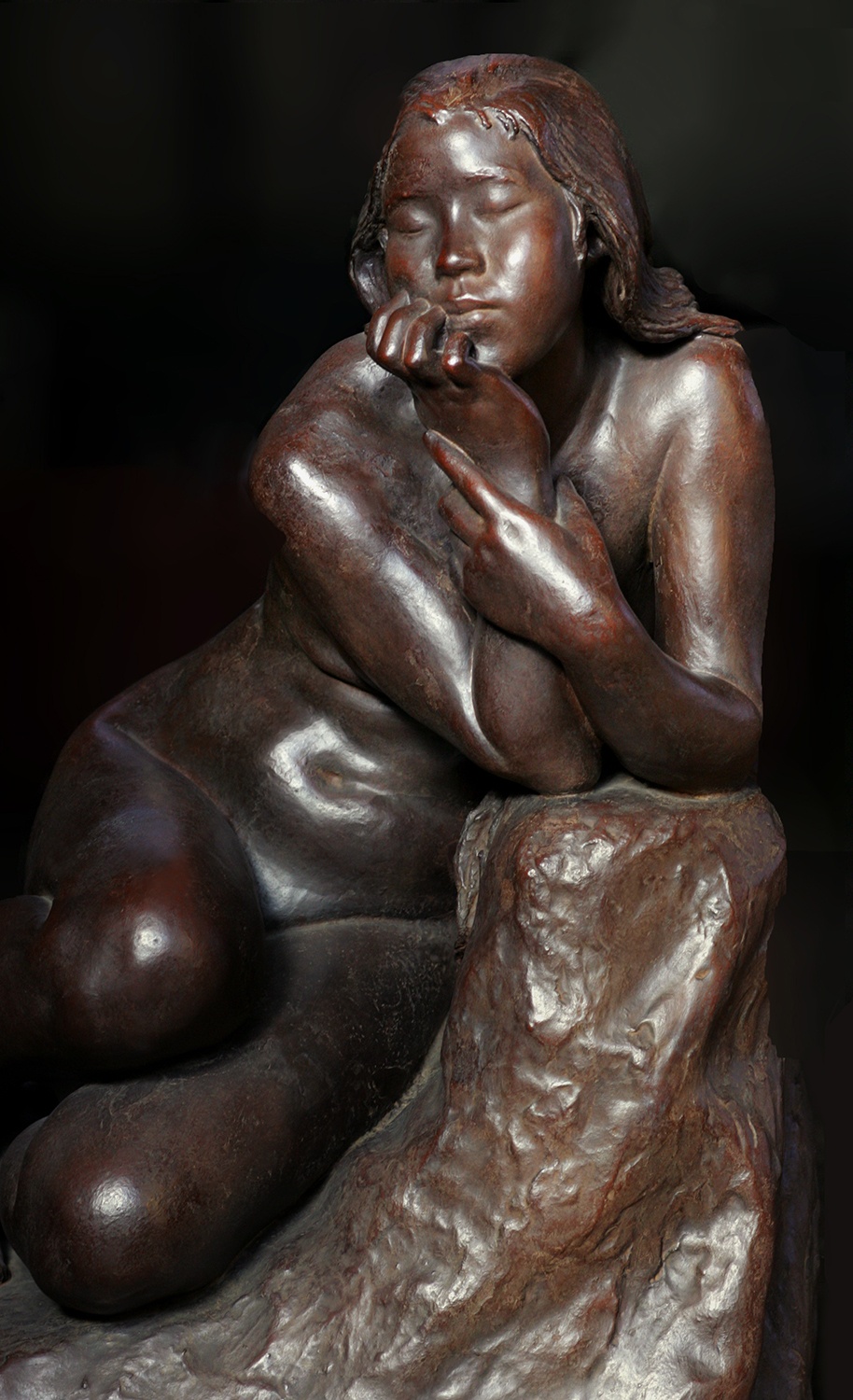
Photo: Virgil Calaguian
Born in 1883 in a tiny village in western Kyushu, Asakura Fumio started making his mark as a sculptor from an early age, winning prizes in the prestigious Japan Art Academy competition eight times in a row. He was just 25 years old, fresh out of art school in Tokyo, when he garnered his first award.
By the time Asakura died in 1964, he had become a greatly venerated figure, hailed as the father of western-style sculpture in Japan, teacher and mentor to several generations of art students at the University of Tokyo and his own studio and school.
Asakura held classes at what was both his atelier and residence, built in the 1930s, designed by the artist himself, after repeated attempts to reach a consensus with the master builder ended up in failure. It took six years for the workmen to finish erecting the unique structure, having never worked on anything like it before.
At the artist's behest, the premises are now the Asakura Museum of Sculpture, located on a side street in Yanaka, an old district that formed part of Edo's shitamachi (lower town). Those who visited or worked in Japan in the 1970s-'80s will most likely feel a sense of deja vu while walking along the streets of Yanaka, particularly the famous shotengai (shopping street) called Yanaka Ginza.
"Here you will find neighborhood vendors and all of the other family-run shops that used to make up every shotengai shopping street in Japan."
The whole area, along with the adjoining Nezu and Sendagi neighborhoods, wears an air of nostalgia for the post-1964 Tokyo Olympics era now affectionately referred to as Showa Jidai (Showa Period). Vegetable vendors with the day's picks apportioned in small trays atop crates and boxes, a fishmonger offering a bounty of fish and seafood spilling out on to the pavement, a butcher's with choice meat and poultry stored in refrigerated glass cases, an inexpensive take-away yakitori shop patronized by streams of both residents and tourists, sweet and salty snacks in bewildering variety - here you will find these and all of the other family-run shops that used to make up every shotengai in Japan. Sadly, some are now disappearing in the wake of the passing of the old owners and the takeover by a new breed of shopkeepers more intent on making profit.
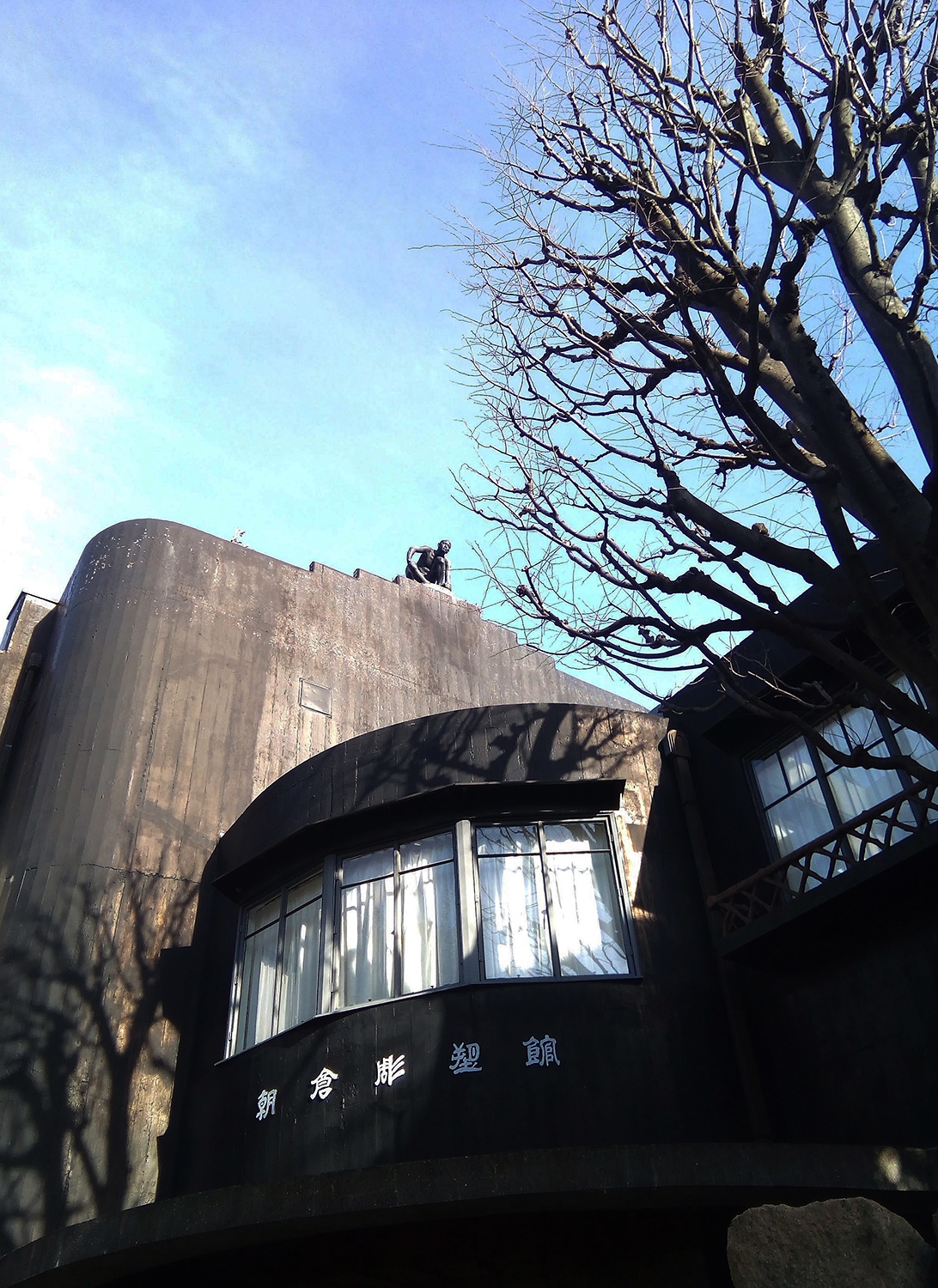
Photo: Virgil Calaguian
The Asakura Museum of Sculpture is housed in a building that was originally intended to blend East and West, but rather than a fusion of the two dissimilar architectural styles, it ended up in two distinct structures, one Japanese and one western, linked solely by a door leading from one to the other.
The western structure, visible from the street, is a three-story building that looks strikingly modern even by today's standards, an asymetrical interlocking of massive geometric forms in rough-surface concrete. This building served as the artist's atelier and school during his lifetime and is now the museum displaying a collection of his sculptures, along with his personal library of vintage hardbound tomes kept in floor-to-ceiling glass cabinets. Throughout the building, the architecture is basically western, though there is a Japanese tearoom on the third floor that was used by the artist for meeting friends and visitors.
The second structure, hidden from public view, is a two-story traditional Japanese house with no visible western influence, partitioned into several tatami rooms that functioned as the living quarters of the artist and his family. As its focal point, the house wraps around a courtyard containing a garden, also purely Japanese in character and style.
"Asakura looked to the West for both technical expertise and artistic inspiration for his work, but chose to live totally in accordance with his Japanese roots."
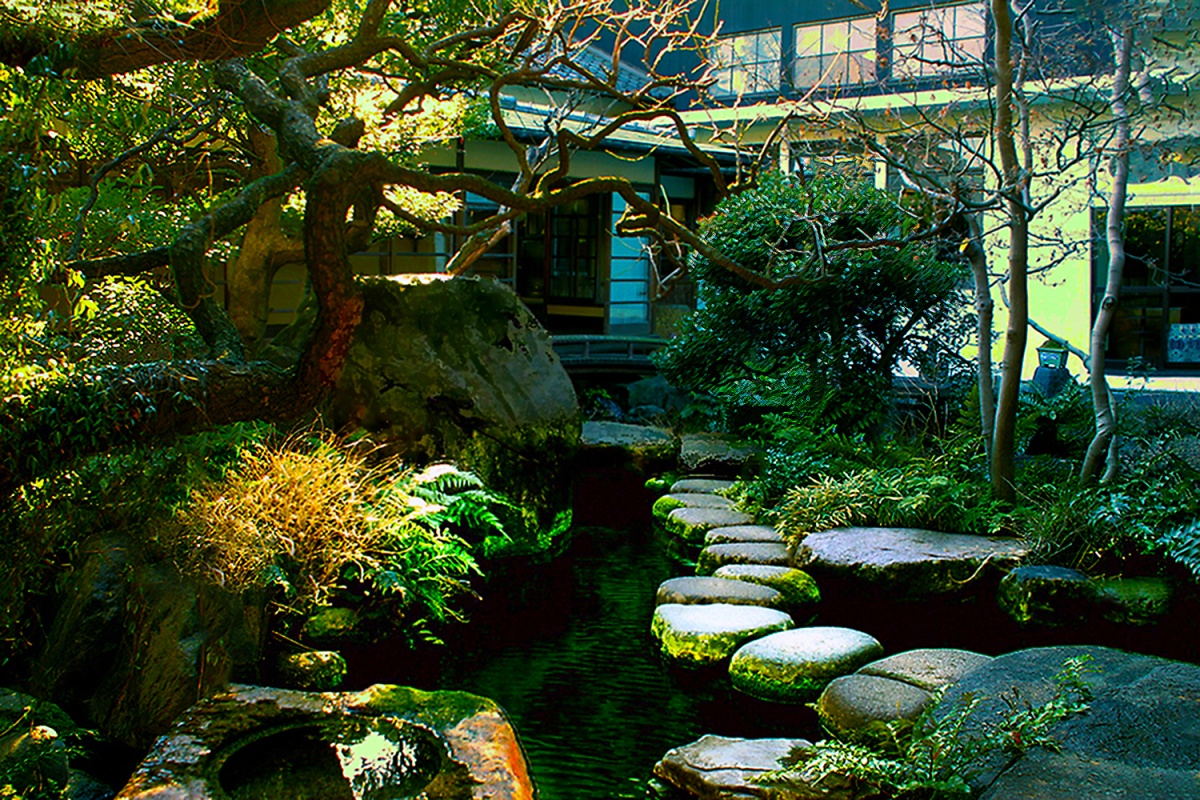
Photo: ©ASAKURA Museum of Sculpture
The garden is centered on a natural spring-fed pond to which has been added an ensemble of huge rocks and clipped shrubs and trees, creating an extraordinary earthbound space pervaded by unearthly peace and tranquility. As accent, five massive rocks selected by the artist have been positioned at various points, as if scattered in random fashion, representing the five Confucian virtues of benevolence, righteousness, propriety, wisdom, and fidelity.
It's interesting that Asakura looked to the West for both technical expertise and artistic inspiration for his work, but chose to live totally in accordance with his Japanese roots. Though, curiously enough, the rocks in the Japanese garden bring to mind the work of western artists, who were admittedly influenced by the naturalism and minimalism of Japanese art and culture. One rock could pass as a sculpture by British modernist Henry Moore while another evokes the full-blown voluptuousness of a female figure by French sculptor Aristide Maillol.
Asakura was, in fact, profoundly influenced by the most famous western sculptor of the modern era - Auguste Rodin. So much so that he is sometimes called the Rodin of Japan.
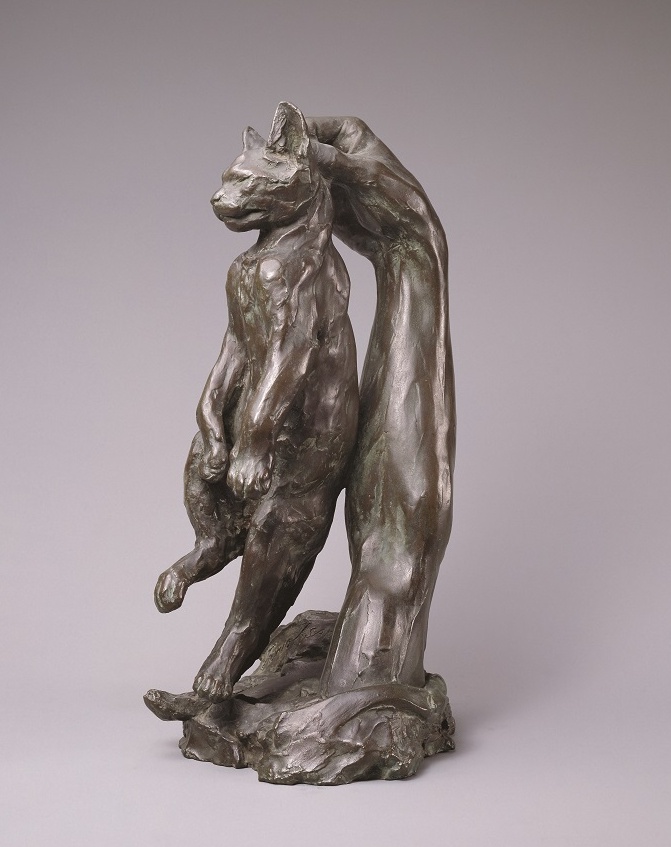
Photo: ©ASAKURA Museum of Sculpture
One subject that Asakura frequently worked on was the feline form. A great cat lover, he created several sculptures of cat figures in different poses, among them the famous Suspended Cat of 1909.
Throughout the courtyard garden, marvelous details abound, such as the twisted plum trees, the velvety moss and feathery ferns clinging to the sides of the rocks, the dappled sunlight filtering through the foliage, and the soothing sound of gently trickling water. Asakura wrote that when he contemplated the garden he could feel his spirit freed from the physical world and reborn in the realm of pure art.
There's another out-of-this-world space springing from Asakura's singular genius: On the rooftop of the western-style building, the visitor is greeted by row after row of lilies, roses, tulips, chrysanthemums, and a whole variety of plants thriving in a cultivated state of wild profusion, along with some olive trees, old and gnarled, perhaps 70 - 80 years old, which altogether combine to produce the marvelous illusion that one has wandered into a lovely garden basking under the Tuscan sun.
"The rooftop garden offers a rare glimpse into Asakura Fumio's personal vision of what truly matters in art and life."
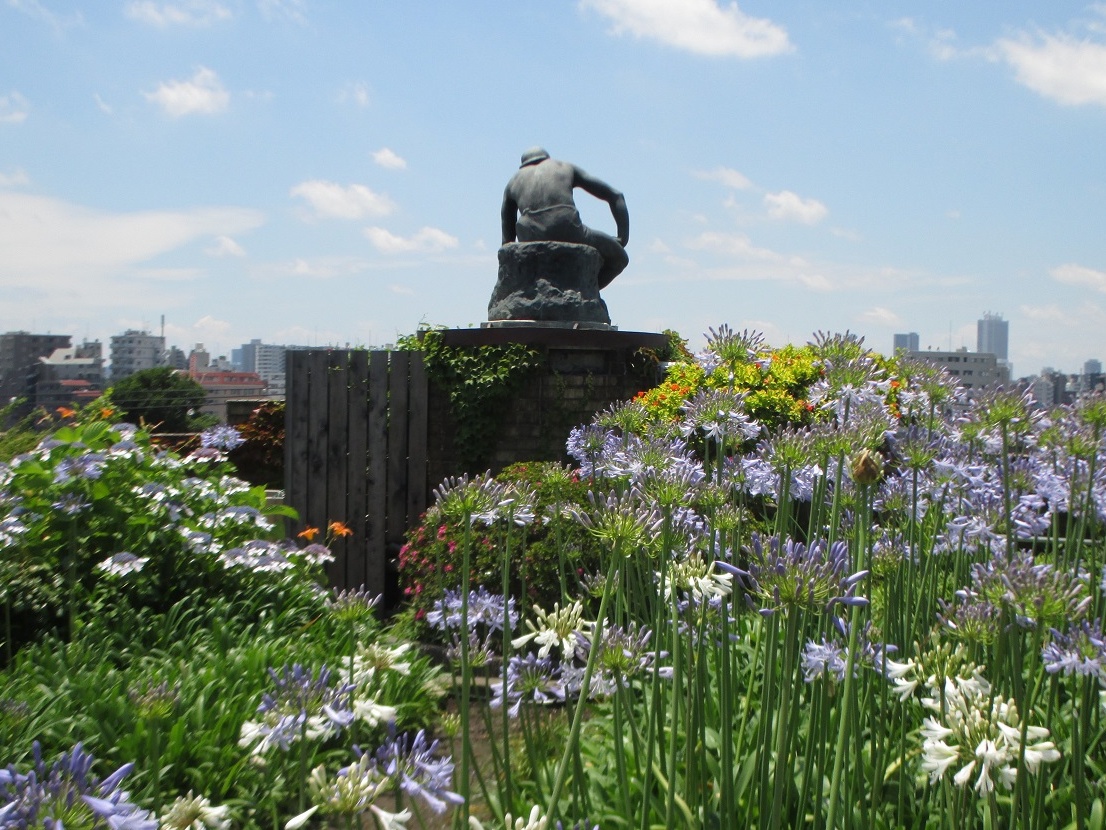
The oldest existing roof garden in Tokyo, this marvellous creation was miraculously spared in the mammoth devastation wrought by hundreds of American bombers in what historians call "the single most destructive bombing raid in human history," carried out in the closing days of WWII.
Standing in the lush garden today, hidden away in the midst of Tokyo's vast concrete sprawl, one experiences a sense of revelation that brings with it a welcome respite from the day-to-day stress of city life. Actually intended by the artist to encourage his students to learn from nature, it offers a rare glimpse into Asakura Fumio's personal vision of what truly matters in art and life. More than that, for having survived the ravages of war and the passage of time, it serves as a symbol of the resilience and endurance of the human spirit in the face of adversity.
How to Get There
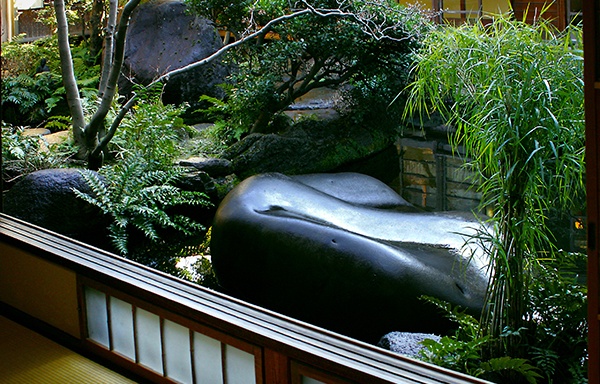
The Asakura Museum of Sculpture can be reached in a five-minute walk from JR Nippori Station (which also offers access to another place of interest, the Yanaka Cemetery) or an eight-minute walk from the Yanaka Reien Iriguchi stop on the Tozai Megurin Line. Operating hours are 9:30am - 4:30pm, closed on Monday/Thursday and year-end/New Year holidays. Note that the museum stays open until 4:30pm but admission stops exactly at 4:00pm.
The Asakura Museum of Sculpture
7-18-10 Yanaka, Taito City, Tokyo
Tel. 03-3621-4549
https://www.taitocity.net/zaidan/english/asakura/
Y500 admission fee. Shoes are not allowed inside the museum.



